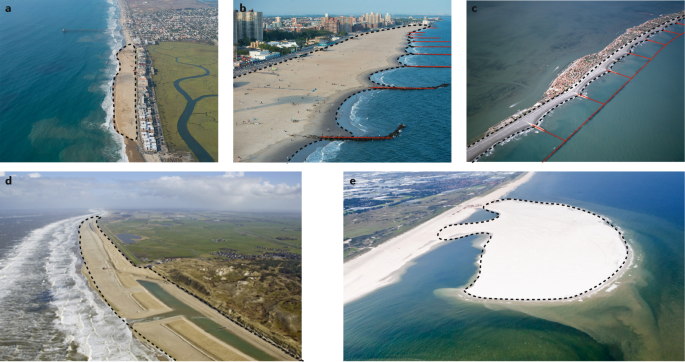Unknown Facts About Shore Protect Team
Table of ContentsFascination About Shore Protect TeamOur Shore Protect Team PDFsGet This Report about Shore Protect TeamNot known Factual Statements About Shore Protect Team 7 Easy Facts About Shore Protect Team ShownOur Shore Protect Team StatementsUnknown Facts About Shore Protect Team
Decline in building worth: As the area tourism is impacted by disintegration, so then is the economic situation. Buyers are less most likely to look for a coastline home that can be destroyed anytime by the upcoming flooding and disintegration emergency. Consequently, home value can go down exceptionally and impact the whole region.Whether a coastline is simply little and crowded or has to close completely for the safety and security of the community and neighboring buildings, this greatly impacts tourist. Consequently, local economies are influenced (https://www.40billion.com/profile/206623108). Threat of injury: The increased threat of flooding and architectural failings creates a raised danger of injury to neighboring travelers and neighborhood members

Coastline stablizing is directly related to their task. Waterfront resorts: Since coastline disintegration impacts tourist, it impacts the success of waterfront resorts.
Everything about Shore Protect Team
Coastal business companies: No visitors indicates no business. Coastal state parks: State parks that exist along coastlines are at threat of damages.
Soft stabilization is a better solution for the atmosphere and more lasting overall. Difficult stablizing uses man-made frameworks as defense to manage erosion. Usually, these structures are set up at best angles or alongside quit sand motion and minimize the force of waves. Many forms of tough stabilization like seawalls and sheet metal are not optimal for shoreline stablizing.
The 9-Minute Rule for Shore Protect Team
There's also not enough proof of their efficiency depending upon the sort of coastline and local problems. Difficult stabilization strategies often tend to be a lot more challenging to mount and do not match the natural visual, sticking out like an aching thumb and damaging regional communities in many circumstances. Beach nourishment is the procedure of adding shed sand and sediment back to coastlines after erosion has actually happened.
TrapBags aid in the procedure of beach nutrients by shielding natural ecosystems and enabling plants to expand. While this process can be costly and is not long-term, the pros tend to surpass the cons. TrapBag obstacles deal lots of buildings that make them optimal for coastal and riverbank disintegration protection. They're: Ecologically pleasant: You can use indigenous dirt both to surround and to fill up the TrapBags.

Little Known Questions About Shore Protect Team.
Easy to install: Reduce of setup means TrapBags can be deployed swiftly in the event of an emergency. They can likewise be set up without any heavy machinery. Cost effective: TrapBags are optimal for both small and huge locations of shoreline. They offer an inexpensive solution to cover projects of any dimension.
Combined with a high construction cost, this has resulted in increasing use other soft engineering seaside monitoring choices such as coastline replenishment. Seawalls are built from different products, the majority of frequently enhanced concrete, rocks, steel, or gabions. Various other feasible building and construction products include plastic, timber, aluminum, fiberglass composite, and naturally degradable sandbags constructed from jute and coir. The ideal seawall layout relies on location-specific aspects, including surrounding disintegration processes. There are three major types of seawalls: upright, curved, tipped, and mounds (see table below).
Natural barriers, such as coral reefs and mangrove woodlands, avoid the spread of tsunamis and the circulation of coastal waters and minimized the flooding and surge of water. A cost-benefit technique is an efficient way to figure out whether a seawall is ideal and whether the benefits are worth the expenditure.
The Main Principles Of Shore Protect Team
A seawall is a static attribute which can contrast with the dynamic nature of the shore and hinder the exchange of debris between land and sea. The table below summarizes some positive and adverse effects of seawalls which can be made use of when contrasting their efficiency with other coastal management alternatives, such as coastline sustenance. [] Advantages and drawbacks of seawalls according to Short (1999) Benefits Negative aspects Long-term option in contrast to soft beach nutrients.

This can cause beaches to dissipate, providing them pointless for coastline goers. Usually, seawalls can be an effective method to manage seaside disintegration, but just if they are constructed well and out of products that can withstand the force of recurring wave energy.
Little Known Facts About Shore Protect Team.
The suitable seawall design depends on location-specific elements, including surrounding erosion processes. There are three primary kinds of seawalls: upright, bent, tipped, and piles (see table below).
Natural obstacles, such as reef and mangrove woodlands, prevent the spread of tidal waves and the circulation of seaside waters and alleviated the flooding and rise of water. A cost-benefit method is an effective means to determine whether a seawall is proper and whether the advantages deserve the expenditure.
Shore Protect Team Things To Know Before You Get This
A seawall is a fixed feature which can contrast with the vibrant nature of the shore and hamper the exchange of sediment between land and sea. Advantages and negative aspects of seawalls according to Short (1999) Benefits Disadvantages Lengthy term service in contrast to soft beach nutrients.

This can create coastlines to dissipate, rendering them worthless for coastline goers. Usually, seawalls can be a successful way to manage seaside disintegration, yet just if they are constructed well and out of materials that can stand up to the pressure of continuous wave power.